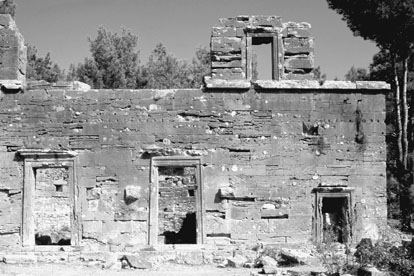

 | Page 180 |  |
1948, 1950–1951, and 1954–1955; iran, 1959– 1960; and turkey, 1963 until the mid-1990s.

Seleucia, south of Baghdad. Robert Braidwood participated in an ongoing excavation here, which eventually uncovered four levels of occupation.
(© Arthur Thevenant/CORBIS)
During the 1930s, Braidwood participated in Amuq expeditions in Syria directed by henri frankfort, who became professor of Near Eastern archaeology at the Oriental Institute and was the head of Braidwood’s dissertation committee. In 1945, Braidwood became the first specialist in prehistory to hold a full-time position at the institute (as well as a joint appointment in the University of Chicago’s Department of Anthropology). He held both positions until 1978 when he became emeritus professor of Old World prehistory at the institute and emeritus professor of anthropology.
Braidwood’s name is most closely associated with a major transition in the human past—the origins of food production in the Near East—and with the site of jarmo in northern Iraq, for many years the oldest village of farmers and herders known anywhere in the world. Braidwood’s contribution, in the 1950s and 1960s, to the archaeology of agricultural origins and to archaeology more generally was primarily methodological, conceiving and implementing interdisciplinary staffs at the fieldwork level. He initiated a highly productive research trajectory that has claimed the attention of several generations of archaeologists and natural scientists. The interdisciplinary investigations he pioneered in Iraq and Iran became models for elucidating agricultural transitions and have also been acknowledged as the best means to delineate regional culture-historical sequences.
Members of Braidwood’s project teams also intitiated two other important firsts in Near Eastern field archaeology: systematic ethnographic observations for archaeological purposes and the recovery of pollen from deeply stratified wet contexts. Much of what Braidwood pioneered is now central to archaeological research design, and he was a powerful force in world archaeology for at least three decades.
See also
References
For references, see Encyclopedia of Archaeology: The Great Archaeologists, Vol. 2, ed. Tim Murray (Santa Barbara, CA: ABC-CLIO, 1999), pp. 503–505.
The history of archaeology in Brazil has been divided into phases following different criteria. Most authors consider that archaeology should have its own disciplinary history, untied to the overall political history of the country. André Prous (1992) identified five periods and Alfredo Mendonça de Souza (1991) followed the same disciplinary history approach but proposed only four periods.
The history of archaeology in Brazil should not, however, be considered independent from Brazilian history. Because the development of archaeology’s practice, theory, and methodology depends directly on the sociopolitical conditions in a given country, it is possible to relate the social practice of archaeology and political changes. As with any intellectual endeavor, archaeological activities are the result of social conditions and relations prevailing in different periods. Thus, we can say that archaeology in Brazil went through seven phases: the colonial period (1500–1822); the Brazilian Empire (1822–1889); the early republic (1889–1920s); an intermediate period (1920s–1940s); the inception of university research (1950–1964); the military period and the constitution of an archaeological establishment (1964–1985); and democracy and a pluralist archaeology (1985 onward).
There are few references in colonial sources to archaeological sites, though Fernão Cardim (1925) referred to shellmounds, known in Brazil by their Tupi name sambaquis, and Feliciano Coelho’s soldiers, as early as 1598, mentioned rock inscriptions (Prous 1992, 5). However, travelers and writers such as Yves d’Euvreux (1985), Gabriel Soares (1944), G. Carvajal (1942), Father Anchieta (1988), André Thevet (1944), and Hans Staden (1930) described native inhabitants and their culture, furnishing a good deal of data on Indian material culture. Thanks to these sources, it is possible to study native settlements while taking into full account the historical evidence relating to the following areas: the East Amazon basin area (Porro 1992; Taylor 1992; Erikson 1992;
 |  |